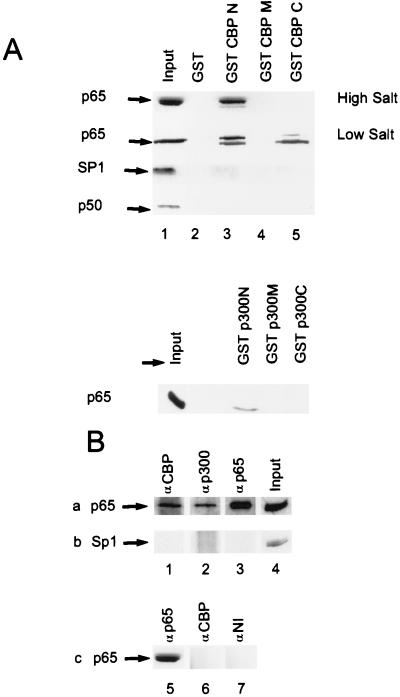Figure 4.
Physical interaction of CBP/p300 with p65 in vitro and in vivo. (A) Association of CBP/p300 and p65. GST–CBP or GST–p300 fusion constructs were used as ligands and tested for interaction with p65, p50, and Sp1 from programmed COS-cell lysates. Agarose-resin containing GST–CBP [N (amino acids 1–771), M (amino acids 1069–1459), C (amino acids 1892–2441)], or GST–p300 [N (amino acids 1–596), M (amino acids 744-1571), C (amino acids 1572–2370)] were mixed with COS cell lysates. After washing at either high or low salt, bound proteins were released and analyzed by SDS/PAGE on 10% gels followed by Western blot analysis for p65. (B) Physical interaction of CBP/p300 with p65 in endothelial cells. Rows a and b are from TNF-α-treated (100 units/ml, 30 min) HUVECs; row c is from unstimulated HUVECs. Immunoblot with anti-p65 (row a and c) or anti-Sp1 antibody (row b) after immunoprecipitation of whole cell extracts with CBP (lanes 1 and 6), p300 (lane 2), p65 (lanes 3 and 5) antiserum or nonimmune (NI) serum (lane 7). Input, whole cell lysate without immunoprecipitation (lanes 4 and 8).

